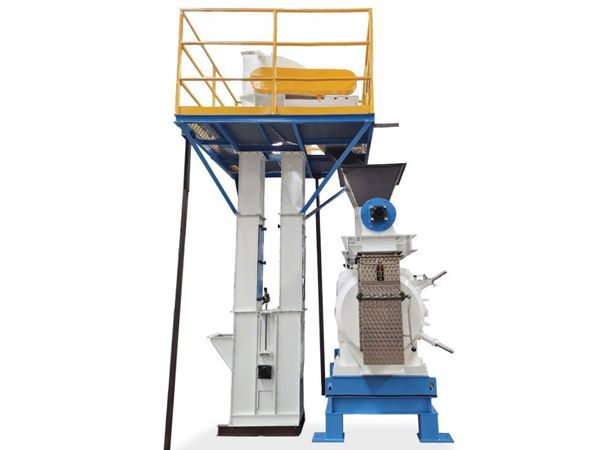
Rice Bucket Elevator
Designed for efficient vertical transportation of rice or grains. They can handle large quantities of rice and transport it smoothly and continuously between different levels, thereby reducing manual labor and increasing productivity.
Lifting capacity: 5.4-142 tons/hour
Lifting height: ≤20 meters
Lifting speed: 1.4-2 m/s
Introduction of Rice Bucket Elevator
Rice bucket elevator is a conveying system specially designed for vertical transportation of rice or other grains. It is commonly used in rice mills and other food processing facilities to efficiently transport rice from one floor to another. A bucket elevator consists of a bucket attached to a belt or chain. The bucket moves continuously with the upward-moving belt or chain, lifting the rice and releasing it at the desired height.
Rice bucket elevators are widely used in the rice processing industry and can be customized to meet different production needs and space constraints. By using rice bucket elevators, producers can manage and transport rice more efficiently, thereby improving production efficiency and quality.
Application of Rice Bucket Elevator

Rice bucket elevators have various applications within the rice milling process, including:
1.Elevating rice from storage bins to processing machines: This is the most common use. The elevator carries rice from the storage area to the first stage of processing, such as cleaning or dehulling.
2.Transferring rice between different processing stages: As rice goes through various cleaning, milling, and polishing steps, bucket elevators move it between each machine.
3.Filling storage silos or containers: Once processed, the rice can be elevated and deposited into final storage areas.
Video
Advantages
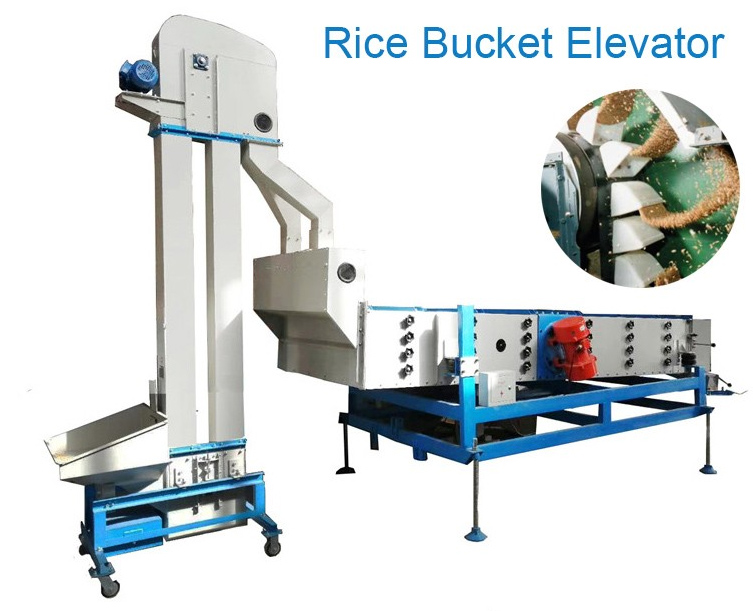
1. Efficient vertical transportation: Rice bucket elevator is specially designed for efficient vertical transportation of rice or grains. They can handle large quantities of rice and transport it smoothly and continuously between different levels, thereby reducing manual labor and increasing productivity.
2. Gentle handling: Rice is a fragile and easily damaged grain. Bucket elevators are designed to handle rice gently, minimizing breakage during transportation and maintaining the quality of the grain.
3. Dust and spillage control: The bucket elevator is equipped with functions such as dust removal system and spillage control mechanism to minimize dust emissions and rice spillage during transportation. This helps maintain a clean, safe work environment.
4. Customizable design: The rice bucket elevator can be customized to meet the specific requirements of the rice processing facility. They can be customized to the required height, capacity and other specifications to optimize the rice handling process.
5. Easy to maintain: The rice bucket elevator is designed to be easy to maintain. They often feature access doors and removable covers that allow for easy inspection, cleaning and maintenance of buckets, belts and other components.
6. Durability and reliability: Rice bucket elevators are usually made of sturdy structures and high-quality materials, ensuring durability and reliable operation even in harsh rice processing environments.
What is the role of the bucket elevator in the rice factory?
In the rice factory, the bucket elevator is mainly used in the following aspects:
1. Increase production efficiency: The bucket elevator can quickly and efficiently transfer rice from one process or equipment to another, improving the operation efficiency of the production line.
2. Save labor costs: The use of bucket elevators can reduce the need for manual handling of materials in rice factories and reduce labor costs.
3. Reduce the risk of material loss: Bucket elevators usually adopt a closed design, which can effectively avoid spillage and pollution of rice during vertical transportation, and reduce the risk of material loss and waste.
4. Maintain material quality: The special design of the bucket elevator can prevent the rice from being damaged or broken during vertical conveying, maintaining the integrity and quality of the material.
To sum up, the role of the bucket elevator in the rice factory is mainly to improve production efficiency, reduce costs, reduce material loss and maintain material quality.
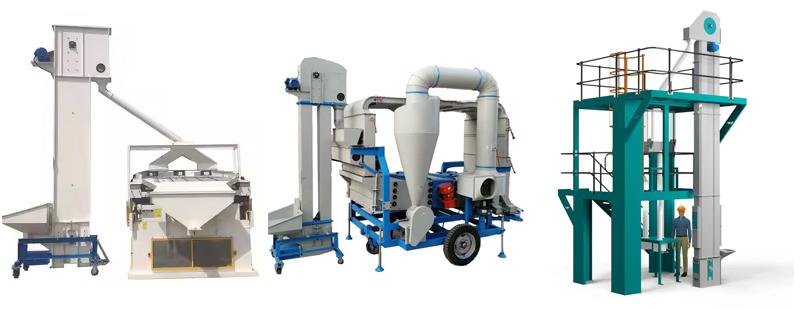
Technical parameters
| Model | TD160 | TD250 | TD315 | TD400 | ||||||||||||
| Hopper form | Q | h | zD | Sd | Q | h | zD | Sd | Q | h | zD | Sd | Q | h | zD | Sd |
| Delivery volume(m3/h) | 5.4 | 9.6 | 9.6 | 16 | 12 | 22 | 23 | 35 | 17 | 30 | 25 | 40 | 24 | 46 | 41 | 66 |
| Bucket width(mm) | 160 | 250 | 315 | 400 | ||||||||||||
| Dou Rong(L) | 0.5 | 0.9 | 4.2 | 1.9 | 1.3 | 2.2 | 3.0 | 4.6 | 2 | 3.6 | 3.8 | 5.8 | 3.1 | 5.6 | 5.9 | 9.4 |
| Bucket distance(mm) | 280 | 350 | 360 | 450 | 400 | 500 | 480 | 560 | ||||||||
| Bandwidth(mm) | 200 | 300 | 400 | 500 | ||||||||||||
| Bucket speed(m/s) | 1.4 | 1.6 | 1.6 | 1.8 | ||||||||||||
| Bulk material(mm) | 25 | 35 | 45 | 55 | ||||||||||||
| Model | TD500 | TD630 | TD160 | TD250 | TD350 | TD450 | ||||||||||
| Hopper form | Q | h | zD | Sd | h | zD | Sd | Q | S | Q | S | Q | S | Q | S | |
| Delivery volume(m3/h) | 38 | 70 | 58 | 92 | 85 | 89 | 142 | 4.7 | 8 | 18 | 22 | 25 | 42 | 50 | 72 | |
| Bucket width(mm) | 500 | 630 | 160 | 250 | 350 | 450 | ||||||||||
| Dou Rong(L) | 4.8 | 9 | 9.3 | 15 | 14 | 14.6 | 23.5 | 0.65 | 1.1 | 2.6 | 3.2 | 7 | 7.8 | 14.5 | 15 | |
| Bucket distance(mm) | 500 | 625 | 710 | 300 | 400 | 500 | 640 | |||||||||
| Bandwidth(mm) | 600 | 700 | 200 | 300 | 400 | 500 | ||||||||||
| Bucket speed(m/s) | 1.8 | 2 | 1 | 1.25 | 1.25 | 1.25 | ||||||||||
| Bulk material(mm) | 60 | 70 | 25 | 35 | 45 | 55 | ||||||||||
Solutions by Industry
-
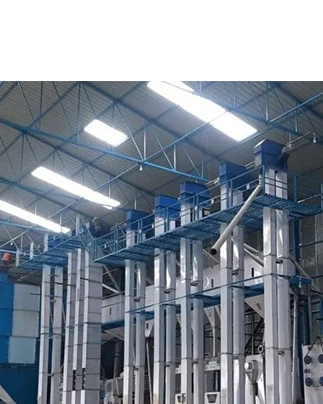
Rice bucket elevator in rice factory
Height: 9 meters
-
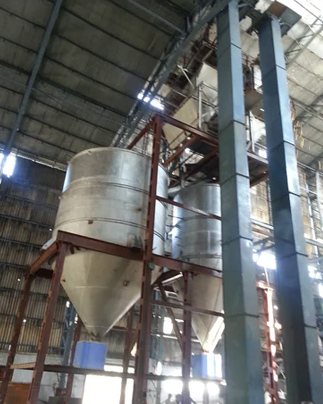
Rice bucket elevator in rice mill
Height: 10 meters
-
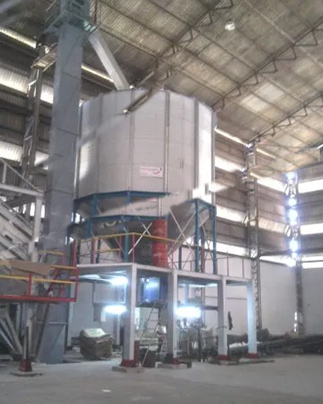
Rice bucket elevator in grain processing plant
Height: 5 meters


